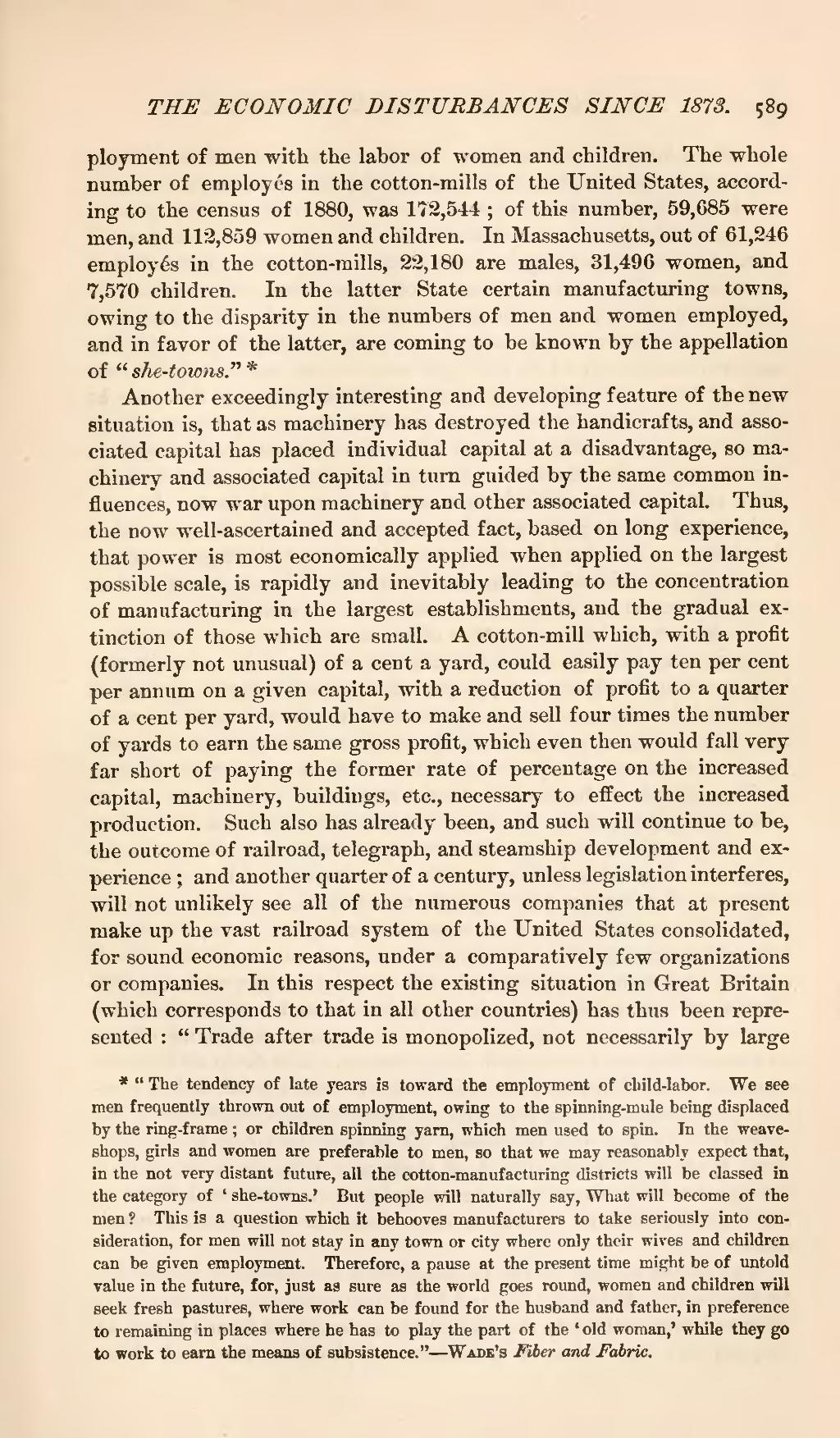ployment of men with the labor of women and children. The whole number of employés in the cotton-mills of the United States, according to the census of 1880, was 172,544; of this number, 59,685 were men, and 112,859 women and children. In Massachusetts, out of 61,246 employés in the cotton-mills, 22,180 are males, 31,496 women, and 7,570 children. In the latter State certain manufacturing towns, owing to the disparity in the numbers of men and women employed, and in favor of the latter, are coming to be known by the appellation of "she-towns."[1]
Another exceedingly interesting and developing feature of the new situation is, that as machinery has destroyed the handicrafts, and associated capital has placed individual capital at a disadvantage, so machinery and associated capital in turn guided by the same common influences, now war upon machinery and other associated capital. Thus, the now well-ascertained and accepted fact, based on long experience, that power is most economically applied when applied on the largest possible scale, is rapidly and inevitably leading to the concentration of manufacturing in the largest establishments, and the gradual extinction of those which are small. A cotton-mill which, with a profit (formerly not unusual) of a cent a yard, could easily pay ten per cent per annum on a given capital, with a reduction of profit to a quarter of a cent per yard, would have to make and sell four times the number of yards to earn the same gross profit, which even then would fall very far short of paying the former rate of percentage on the increased capital, machinery, buildings, etc., necessary to effect the increased production. Such also has already been, and such will continue to be, the outcome of railroad, telegraph, and steamship development and experience; and another quarter of a century, unless legislation interferes, will not unlikely see all of the numerous companies that at present make up the vast railroad system of the United States consolidated, for sound economic reasons, under a comparatively few organizations or companies. In this respect the existing situation in Great Britain (which corresponds to that in all other countries) has thus been represented: "Trade after trade is monopolized, not necessarily by large
- ↑ "The tendency of late years is toward the employment of child-labor. We see men frequently thrown out of employment, owing to the spinning-mule being displaced by the ring-frame; or children spinning yarn, which men used to spin. In the weaveshops, girls and women are preferable to men, so that we may reasonably expect that, in the not very distant future, all the cotton-manufacturing districts will be classed in the category of 'she-towns.' But people will naturally say, What will become of the men? This is a question which it behooves manufacturers to take seriously into consideration, for men will not stay in any town or city where only their wives and children can be given employment. Therefore, a pause at the present time might be of untold value in the future, for, just as sure as the world goes round, women and children will seek fresh pastures, where work can be found for the husband and father, in preference to remaining in places where he has to play the part of the 'old woman,' while they go to work to earn the means of subsistence."—Wade's Fiber and Fabric.
